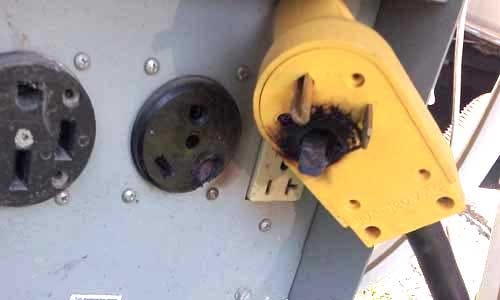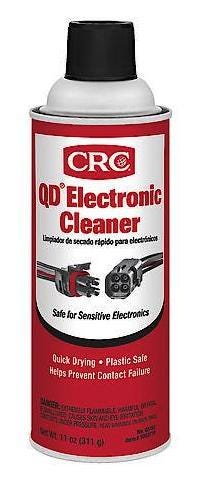Baby, it's hot outside!
Don't let the heat burn up your shore power connectors from lack of maintenance...
Everyone,
We’re all suffering from the heatwave. It’s been 95 to 98 degrees during the afternoon at my house in Maryland for the last two week. And it has topped 105 degrees a few times. Ugh!
I’m in the middle of testing RV air conditioners from Coleman, Dometic and Truma for starting/running current both on shore power and generators. So when I tell you air conditioners are under a terrible strain trying to cool your RV when it’s 110 or even 117 degrees outside, you can believe it.
But it’s not just the air conditioners themselves under strain. Your shore power connectors and pedestal outlets can literally burn up from the extra amperage that A/C compressors draw at high heat, combined with oxidized contacts and/or loose terminating screws. Read this posting on the RV Tips Facebook group a few days ago. - Mike
We are a full time stationary 50 amp fifth wheel. We have been in the same spot for about a year. Today our shore power was smoking and started to melt. We cut all the power at the breaker and disconnected from our rig. The plug at the rig was not hot only at the shore. We were assuming that we were just drawing too much power. But after being here for a year would this problem really show up now?
We also have a on board generator that we have not had to run in over a year since we have been stationary. We kicked the generator on after the shore power incident and about 2 hours later, it turned off and was extremely hot. Any thoughts? Are they both just bad luck flukes at the same time or could something else be going on?
Hey Brittney
Overheating shore power outlets and plugs are generally caused by contact oxidation or loose screws on your shore power connectors. For oxidation I recommend a yearly cleaning with contact cleaner followed by silicone spray. Loose screws should be properly retorqued with the power off.
Note that I’m currently testing generators powering a pair of 13.5k or 15k air conditioners at 98 degrees F air temperature , and the extra current draw from the high heat can exceed the continuous current draw ability of the generators. Remember, generators often have misleading labels as to their power output.
Note that this Predator 5000 generator is really only rated for 3900 continuous watts from its 30-amp TT-30 outlet. And that output wattage will decrease as the temperature and altitude gets higher Plus you have to derate the continuous power of dual-fuel generators when running on propane instead of gasoline.
And it’s not just Predator brand generators from Harbor Freight. Even my Honda generators aren’t rated for full continuous wattage at high temps and altitudes.
Clean those shore power contacts!
Continuous air conditioning during hot months should not cause the shore power connections to overheat as long as they’re not oxidized (corroded) or loose. But once an outlet is overheated the brass contacts loose pressure and the receptacle will need to be replaced.
Read more about contact cleaners HERE.
Check for loose screws!
Check and retorque your shore power terminating screws if the plug feels hot to the touch. You should also check your load center circuit breaker screws and ATS (Automatic Transfer Switch) for loose screws seasonally, especially if there’s any burning smells or lights flickering. Read about checking terminating screw torque HERE.
More on pedestal maintenance tomorrow!
Let’s play safe out there… Mike











I poo poo’d a couple friends who showed me 30-amp plugs that had melted and or burned…until it happened to me! I replaced my 30-amp plugs with SmartPlugs. That was about 5-6 years ago. Never an issue since but I keep an eye on it.
What do you think about using dielectric grease on the blades of plugs. I have been using it on mine for years. I wipe off and replace whenever it shows any signs of dirt / dust accumulating on the plugs.